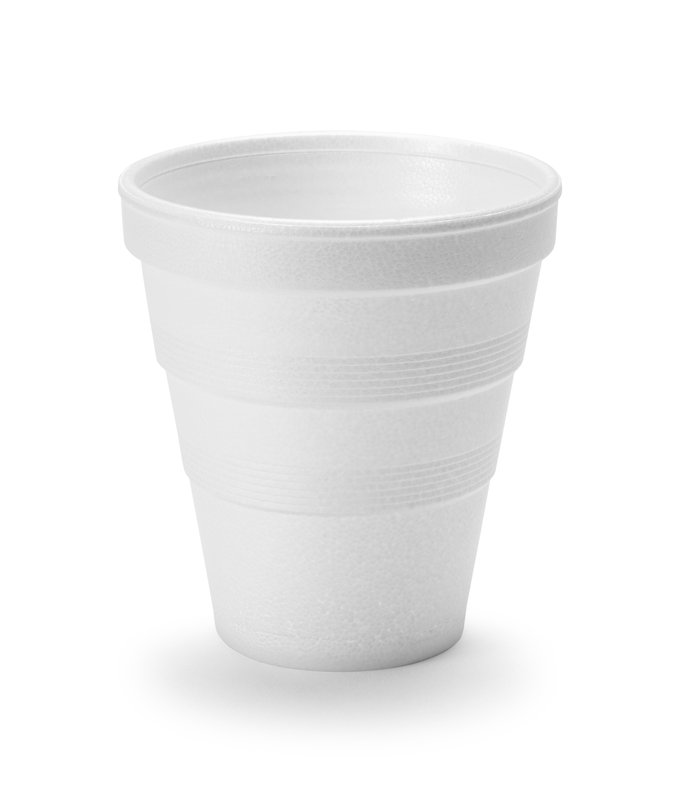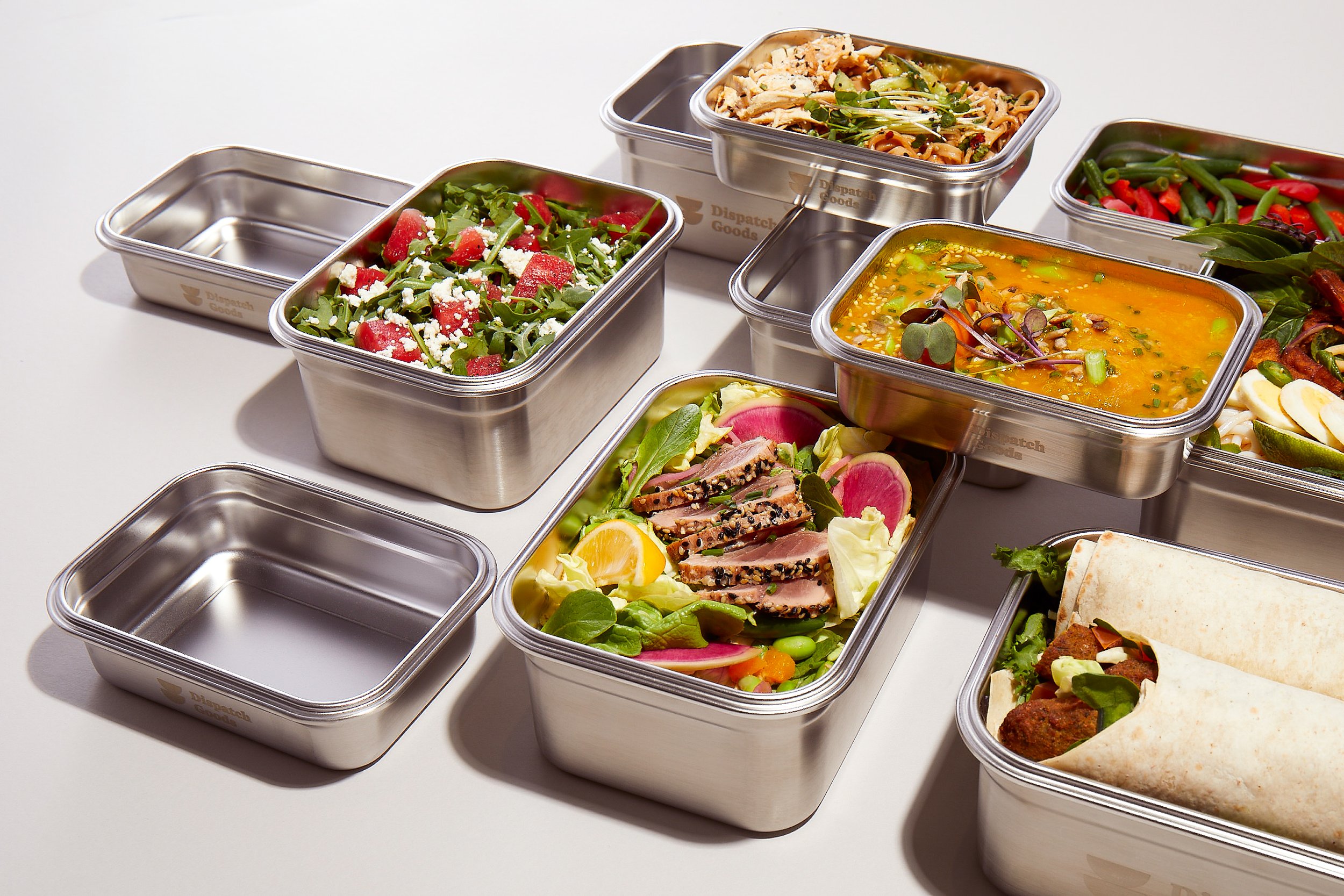The New Reuse Economy: The future of food service is reusable
Today, much of institutional, fast food, and fast casual dining – and virtually all takeout and delivery – uses disposable food-serviceware. And all those takeout containers, bags, boxes, condiment packets, plastic utensils, cold and hot cups and lids, and napkins add up. Nearly one trillion disposable food service products are used each year in the United States.
Unfortunately all these disposables come with costs – costs to the environment from natural resource extraction, to climate impacts, to plastic pollution; costs to food-service businesses from the ongoing procurement and on-site waste management of disposables; and costs to governments and taxpayers from solid waste costs and litter cleanup. These costs also represent lost opportunities to create better systems for getting consumers what they want without all the waste.
But the good news is that there’s a new reuse economy emerging for food service that has the potential to completely disrupt our current disposable food-service paradigm and replace it with something better.
Reusable foodware has been (and still is) the norm most of the time
Today, the majority of meals consumed at home in the US are served on reusable (“real”) plates, cups and cutlery. Americans might bring out paper plates and plastic cups for parties, but we usually eat off of reusable rather than disposable foodware at home.
But with restaurants, the picture changes. There are approximately one million restaurants in operation in the US, with an estimated 205,000 of those being Quick-Service Restaurants (QSRs – or fast food). Roughly 41% of people in North America eat at or from QSRs each week. And disposables reign at QSR chains, as well as for take-out and meal delivery.
The big disposable idea
All this eating out on disposables didn’t used to be the case. The history of food service is rich with providers offering prepared food to the public without the hassle of making it or cleaning up. Take-out food was a small part of the overall industry until the post-World War II era.
During the war, the extraction, mining and manufacturing industries ramped up production levels to serve the war effort. Business was good – but once the war was over, these industries asked, “What should we do now?”
Their answer: Keep churning all these materials through the economy. One of the big ideas was to sell materials like aluminum, paper, and plastic in the form of disposable products. There’s a famous 1955 Life Magazine article titled Throw-Away Living. It includes a black and white photo of a man, woman and child with their hands throwing dozens of disposable paper and plastic cups, plates, trays, forks and knives in the air.
This was not intended to be a cautionary tale. It was meant to be a celebration: humans had entered a golden age and would never have to wash a plate again.
But it didn’t work. The Americans of the 1950s – who had survived the Great Depression, grown victory gardens, and donated unwanted metals to be melted into guns for the war effort – didn’t wholeheartedly embrace disposable products at home.
The birth of the Throw-Away Economy
However, business leaders in the restaurant industry saw an opportunity. This was the 1950s. America had won World War II, and we were entering the era of American power and economic supremacy. There were lots of good paying jobs, and more people had extra income to spend on things like going out for a cheeseburger or ordering a pizza for delivery.
Fast food proliferated, and the drive-in restaurant became a national cultural obsession. And instead of being served on real plates with real cutlery – which had been the norm – diners were served on disposables. Eventually, the drive-in restaurant gave way to the drive-through restaurant, with McDonald’s opening the first drive-through in 1975. Needless to say, more disposables followed.
Additionally, evening programming and the rise of televisions in every home also coincided with the post-war economic boom – and frozen TV dinners became a household staple.
Then, in 1960, Dart Container Corp developed and started shipping expanded polystyrene (Styrofoam) coffee cups. Companies like 7-11 helped popularize to-go coffee in the 1970s, and Starbucks would go on to make the disposable coffee cup king from the late 1980s onward.
Pushback on Disposability
Not surprisingly, a lot of these new disposable products started showing up in the environment as litter. During the 1960s, the explosion of litter provoked the ire of concerned citizens and policymakers. Leading up to the first Earth Day in 1970, environmental demonstrations across the country focused on the issue of disposable products. These protests held the industry — not consumers — responsible for the proliferation of disposable items that depleted natural resources and created massive amounts of litter.
Over time, and with much policy work and legislative effort in between, these concerns over waste and environmental degradation have led food service companies to question their heavy reliance on disposable products – in turn helping to bring back reuse and pave the way for new reuse services.
This is good news for the environment
A review of life-cycle assessments (LCAs) for Upstream’s 2021 Reuse Wins report show that reusable foodware beats single-use alternatives through every environmental measure (whether that’s climate, water, land use, waste, litter, plastic pollution, etc.). Reusables always hit a break-even point where they outperform the disposables, and the benefits to the environment accrue with each additional use past that point.
image credit: Dispatch Goods
It’s also good news for business
The economic benefits of reusables work the same way as their environmental benefits. The upfront costs to purchase the reusables may be higher, but after just a few uses, the reusable breaks even and then starts to save businesses money.
And that’s the case 100% of the time for on-site dining. Businesses (including schools, food courts, college and corporate campuses, and large-scale venues) can all save money by switching from single-use to reuse. The ReThink Disposable project has demonstrated the short-term payback of switching to reusables in over 200 cases of providing technical assistance to businesses and gathering cost impact data.
In 100% of restaurant case studies and eleven institutional dining programs, the program documented cost savings. Transitioning to reuse also increases both customer satisfaction with the dining experience and operator satisfaction with the presentation of their food. It can build brand loyalty and provide community benefits, such as decreased litter cleanup costs.
A new reuse service economy for take-out and delivery is emerging – with significant opportunities for entrepreneurs, investors, and customers.
Companies across the globe are providing restaurants and cafes with reuse services for take-out drinks in reusable cups. From lending libraries and deposit systems that are free to the customer to customer-subscription services, these options are growing all across the globe. Similarly, new services are emerging to provide meals for take-out or delivery in reusables – including dishwashing and logistics services – which can replace a restaurant’s existing inventory management for disposables.
Reusable cup systems are being innovated at large venues like arenas and stadiums with a number of companies offering services in U.S. markets – including mobile dishwashing at events.
Innovators are also changing home delivery for groceries, personal care products and sundries with reusable container systems and services. In addition, new companies are innovating touch-free bulk shopping at grocery stores with standardized containers on-site to simplify the process for consumers.
Some Recommendations for the Food Service Industry
The Food Service Industry (QSRs, Concessionaires, and Full Service Restaurants) - and their value chains - should embrace reusable foodware as the future:
For large companies: set “rates and dates” targets to transition from single-use to reuse, similar to what Coca Cola has done with their pledge to serve 25% of their beverages in refillable formats by 2030.
For all food service operations: eliminate disposables for on-site dining as much as possible.
Begin developing or participating in reusable take-out and delivery systems either a) individually, or b) through using 3rd party reuse services.
Reusable Food Serviceware is a Win-Win
The bottom line is that reusable food serviceware helps reduce the plastic and climate impacts of serving prepared food to customers and saves businesses money. It’s a win-win.
And it’s not just a hypothetical vision for the future. All over the world, people are working to
change the throw-away system by innovating new ways to bring durable, reusable, and refillable products into food service.
To learn more about how food service can help scale The New Reuse Economy, check out our latest publication The Future of Foodservice is Reusable.





